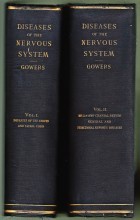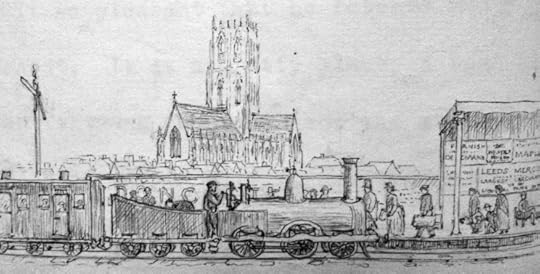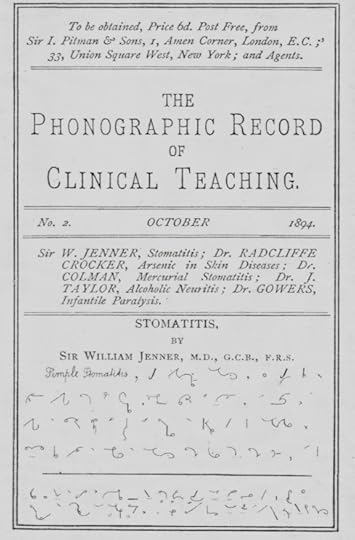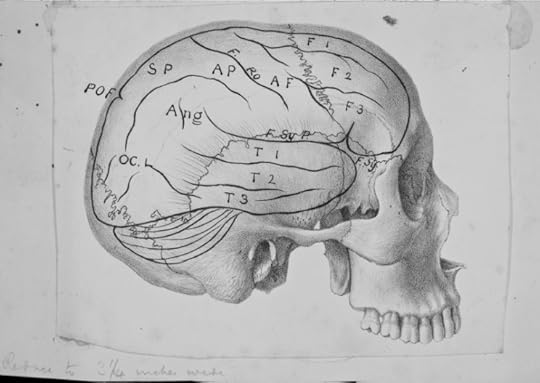Exploring the Victorian brain, shorthand, and the Empire
In 1945 the British Medical Journal marked the centenary of the birth of Victorian neurologist William Richard Gowers (1845-1915), noting that his name was still a household word among neurologists everywhere and that ‘historical justice’ required that he should be remembered as one of the founders of modern British medicine.
Scott, Eadie, and Lees exploring the Gowers
I (Ann Scott) had just published a biography of my grandfather — Ernest Gowers: Plain Words and Forgotten Deeds (Palgrave, 2009) — when I met Professor Mervyn Eadie in a Brisbane coffee shop. He suggested I might fill the void by writing a ‘prequel’ — a biography of Ernest’s father, William Richard. I had academic qualifications in neither medicine nor medical history, but when Mervyn agreed to join me as a co-author I thought it might be viable. We then approached Professor Andrew Lees who, like Gowers, had spent most of his career at the National Hospital for Neurology and Neurosurgery, Queen Square, to see whether he might be interested in the project. He agreed to join us.
Exploring the Victorian brain

Manual of Diseases of the Nervous System
Gowers was a practising neurologist who also researched, wrote, and taught neurology and the working of the human brain. His greatest work was his two volume Manual of Diseases of the Nervous System (Churchill, 1886 & 1888).
Gowers’ own brain was worth exploring. He left a number of diaries and letters which shed new light on his struggle to succeed, his developing social attitudes, and scientific and artistic interests. His early diaries help to explain how he managed his ‘rags to riches’ rise from boot-maker’s son into the Victorian professional class.
During the twenty most productive years of his career he had little time for personal friendships. However, surviving letters written in his later years reveal the warmth of his friendships with men whose intelligence, sense of inquiry, and adventure he admired.
Exploring shorthand?

Gowers' hand-made shorthand bookplate: 'Constant occupation prevents temptation'
One of the secrets of his success was his mastery of Pitman’s shorthand. Long before the days of electronic databases, Gowers collected thousands of detailed case-notes, taken in shorthand at his patients’ bedsides. Gowers was an early convert to applying statistics to medical research. His shorthand case-notes formed his database.
He taught himself shorthand at the age of 15, driven by the hope that it would be useful for lecture notes if he managed to gain a place at University College London. He practised the skill when a medical apprentice in the village of Coggeshall, Essex, by keeping a daily diary in shorthand. Perhaps genetic memory drove me, also at the age of 15, to learn Pitman’s shorthand. Thus it transpired that my first task, just before writing our book, was to transcribe this 80,000-word diary contained in a notebook the size of an iPhone.

First page of Gowers' 1862 shorthand diary
When Gowers became a medical student he took all his lecture notes in shorthand, and was employed by the eminent physician, Sir William Jenner as his personal secretary. His early interest in shorthand developed into an obsession. When he got engaged, Gowers persuaded his fiancée to learn it so they could conduct their courtship via shorthand postcards. He insisted his four children learn shorthand as soon as they could read, and favoured those of his medical students and housemen who used shorthand. In later life Gowers also initiated and became first President of the Society of Medical Phonographers, dedicating much of his time to promoting medical shorthand. Still driven by this distant Gowers gene, I visited the British Library which houses one of the few surviving sets of the journal Gowers initiated and edited, the Phonographic Journal of Clinical Practice and Medical Science, and compiled a bibliography of all the articles (by Gowers and many others) that appeared in this journal.
Exploring the British Empire
In common with other Victorians, Gowers was fascinated by tales of adventure and the expanding British empire. He became a friend and medical advisor to Rudyard Kipling who, when Gowers was ordered to take a complete rest in 1898, encouraged him to visit South Africa. Gowers took with him his elder son, William Frederick, and ‘lost’ him to Cecil Rhodes’ British South Africa Company, and then to the Colonial Civil Service.
Exploring Gowers
We re-examined Gowers’ original works, many of which have now been digitised, and we also managed to acquire a rare first edition of his Manual. We also trawled through the archives of BMJ, Lancet, and other medical journals to read his articles and also to follow the various assessments of Gowers over time: book reviews, obituaries, and 20th century histories of neurology. This enabled us to compare our own assessments with his achievements as they were perceived at the time, and to see how his theories have stood the test of time.
The family still held a “Children’s Diary” in which, during the 1880s, Gowers recorded and illustrated for his children, descriptions of their holidays in Britain and abroad. Some sketchbooks and other memorabilia included a holiday in Doncaster to visit his wife’s relatives (the Baines family, proprietors of the influential Leeds Mercury), local expeditions, and memories of nationally significant events.

Boarding the train at Doncaster station, July 1885
The museum and archives at the National Hospital for Neurology and Neurosurgery, Queen Square, have only recently rediscovered and catalogued materials formerly held in cupboards outside the hospital wards. The treasures found during this cataloguing included original drawings by Gowers for the first edition of his Manual (1886 & 1888); an album of holiday sketches (one of which had been exhibited in the Royal Academy); two unpublished lectures; and corrections for a third edition of volume 2 of his Manual, also never published. These have been digitized and images will be published online in October 2012 to coincide with the launch of our book.
There were some other surprising finds. Gowers had initiated his friendship with Kipling. He also did so with the Australian adventurer George ‘Peking’ Morrison. Gowers, whose intervention led to Morrison’s appointment as a The Times correspondent in China, wrote many letters to Morrison when the young man was in Peking. Fortunately Morrison was a hoarder, and all the letters he received found their way to the Mitchell Library in Sydney. Through great good fortune we found these letters which, like Gowers’ diaries, give new insights into the attitudes of this pioneering Victorian neurologist.
Ann Scott, Mervyn Eadie, and Andrew Lees are the authors of William Richard Gowers 1845-1915: Exploring the Victorian Brain. Ann Scott is an Adjunct Professor, School of History, Philosophy, Religion and Classics at the University of Queensland, Australia. Mervyn Eadie is formerly Professor of Clinical Neurology and Neuropharmacology at the University of Queensland, Australia. Andrew Lees is Director of the Reta Lila Weston Institute of Neurological Studies, University College London, and Professor of Neurology at National Hospital for Neurology and Neurosurgery, Queen Square, London.
Subscribe to the OUPblog via email or RSS.
Subscribe to only psychology articles on the OUPblog via email or RSS.
View more about this book on the 




Oxford University Press's Blog
- Oxford University Press's profile
- 238 followers





